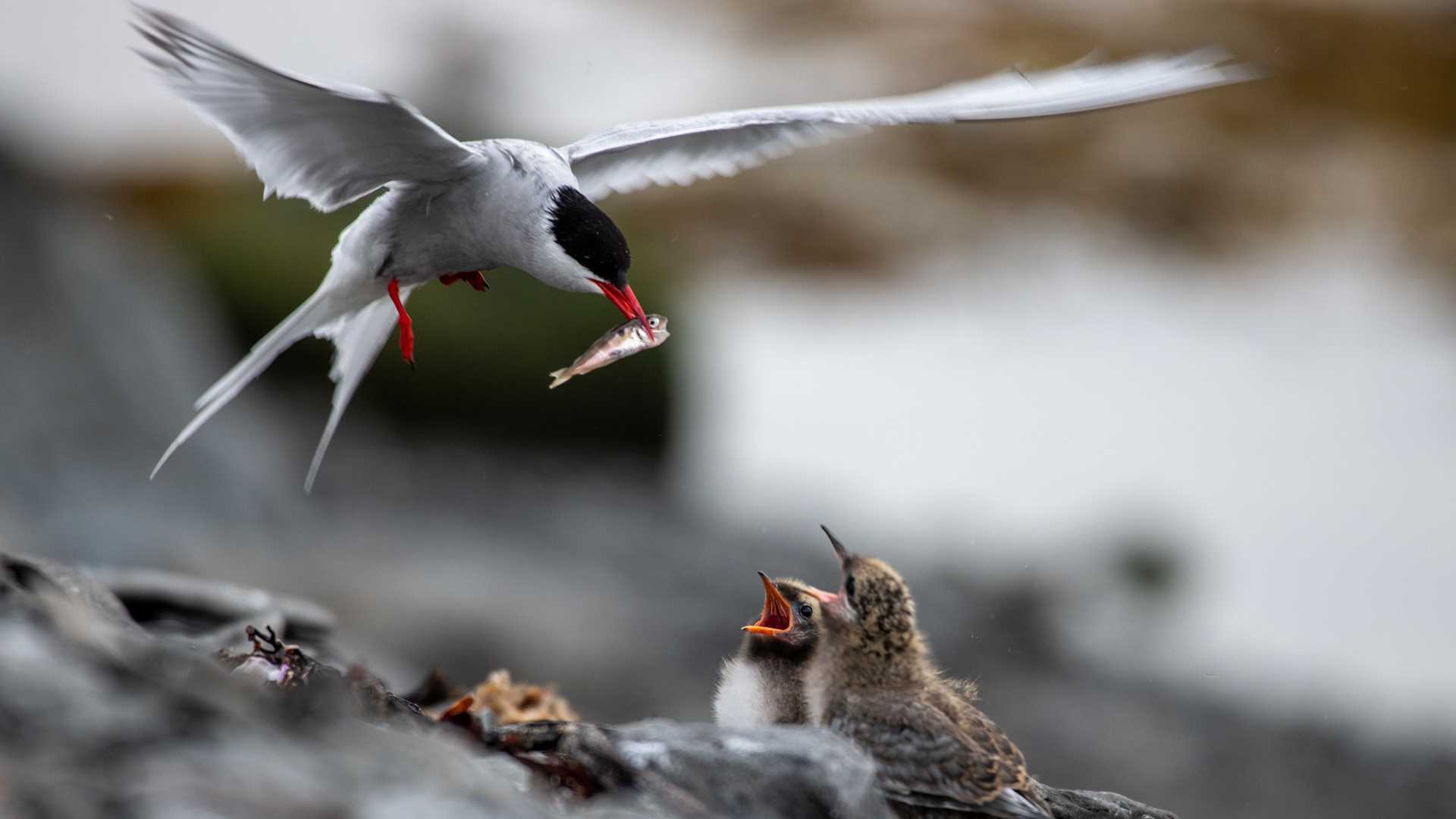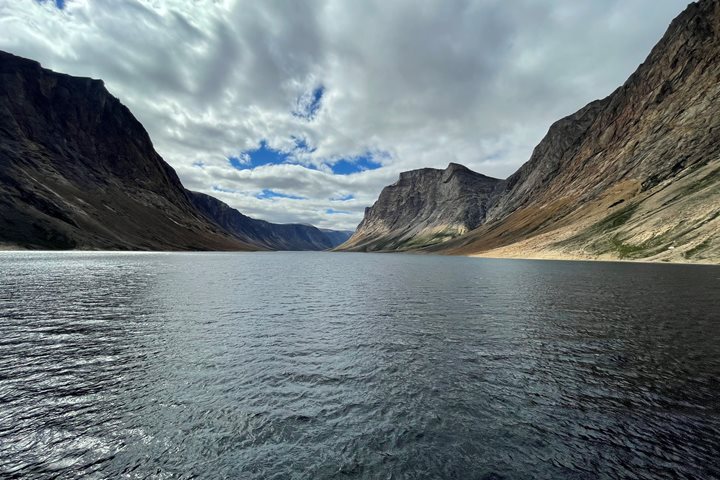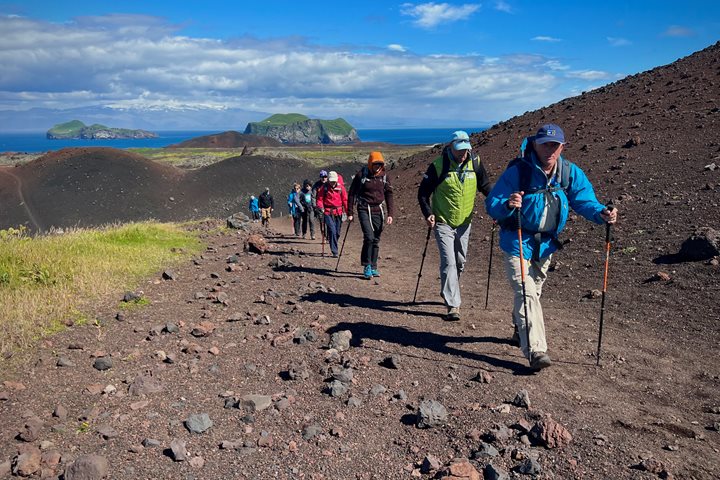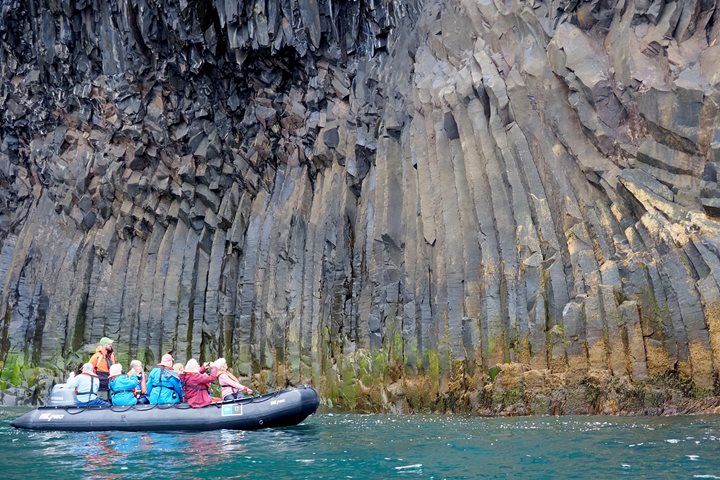The day started with a common sight in Iceland: rain clouds. However, as we came closer to the island of Vigur the sun broke through the clouds and welcomed us to Isafjardardjup in the West Fjords of Iceland.
Although Vigur is a relatively small island it is home to hundreds of thousands of birds, primarily puffins, arctic terns and eider ducks. Upon landing at the dock we were welcomed by Gisli and Felicity, the owners and eider “farmers“ of Vigur. They do not breed or feed the eider ducks, but sustainably collect down from their nests for it to be exported, mostly to Germany. While exploring the island there were sightings of harbour seals resting on rocks, black guillemots flying in with rock gunnels to feed their young, very protective arctic terns, thousands of puffins and more. The only preserved wooden windmill in Iceland has stood on the island since 1860 and is now protected.
As we were leaving Isafjardardjup we came upon multiple humpback whales feeding in the deep fjord. Isafjardardjup has an average depth of between 150 and 300 feet and provides rich feeding grounds for cetaceans. Humpback whales seen in Iceland in summer have generally traveled around 4600 miles from the Gulf of Mexico where they breed. They feed on krill, plankton, and small fish such as capelin.
Observing the whales from National Geographic Explorer there were sightings of breaching whales, sometimes even two individuals at the same time. Why they breach is a question yet to be answered, but some scientists suspect humpback whales breach and slap their fins and flukes on the surface as a way of communicating.







